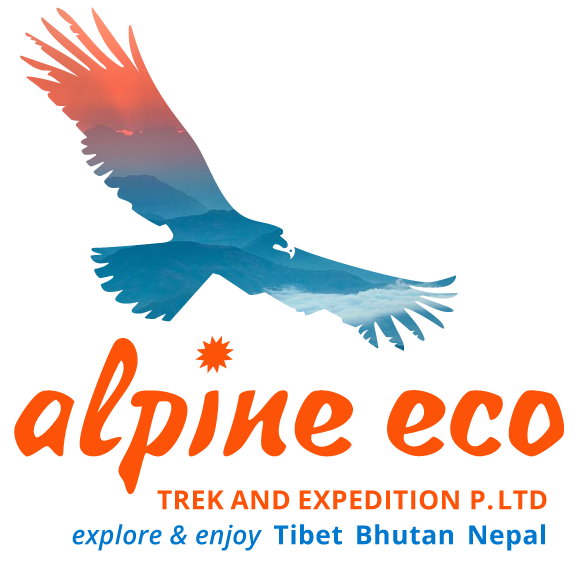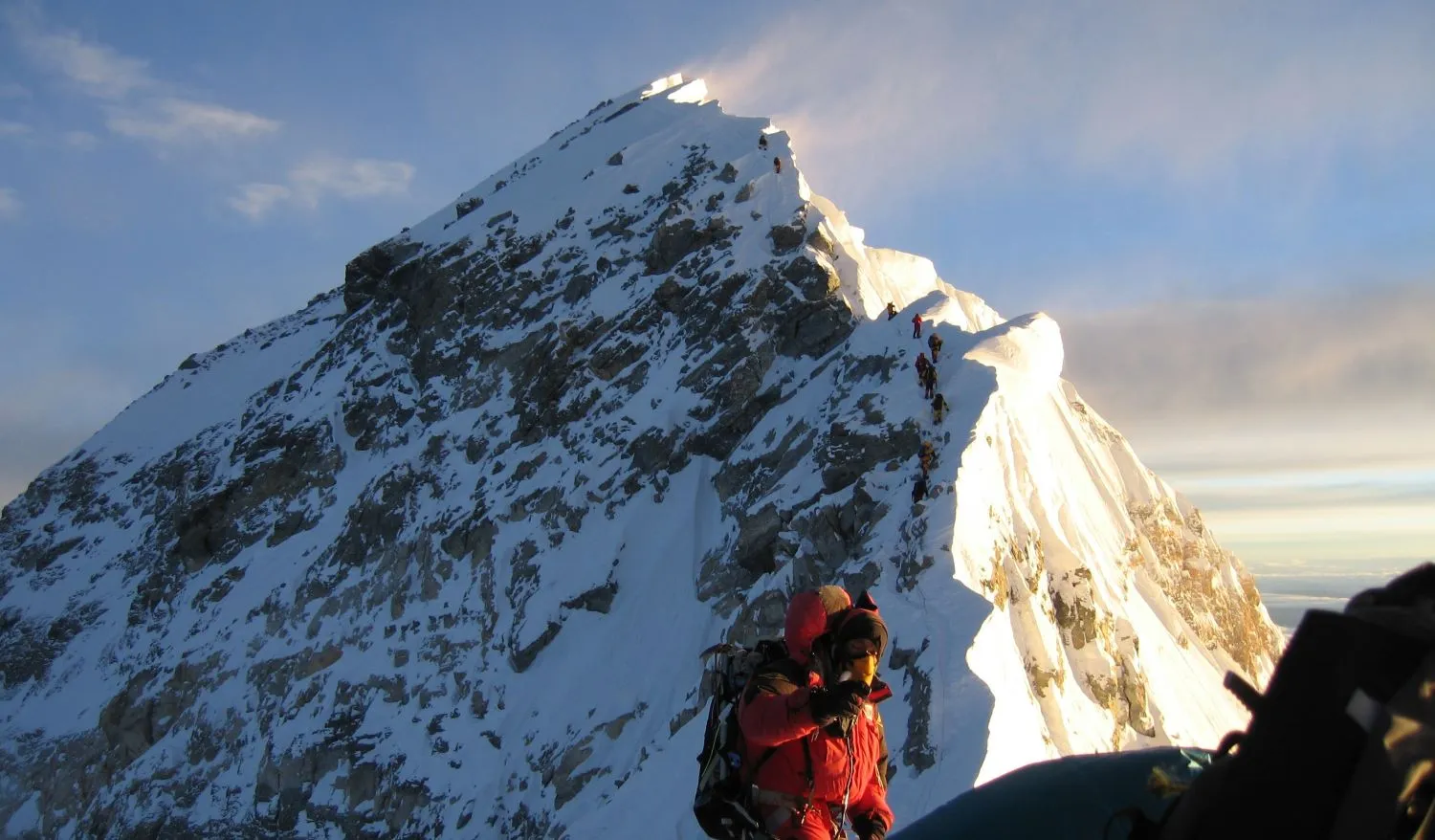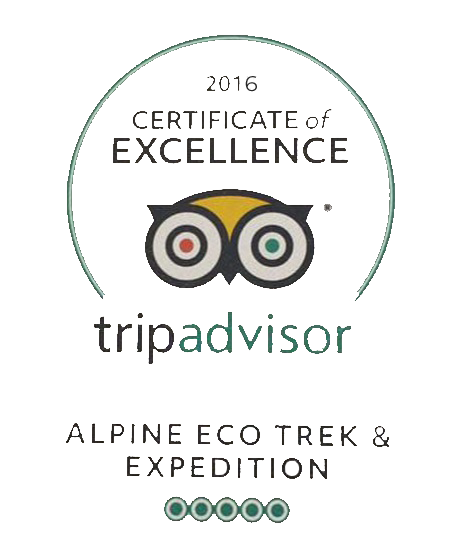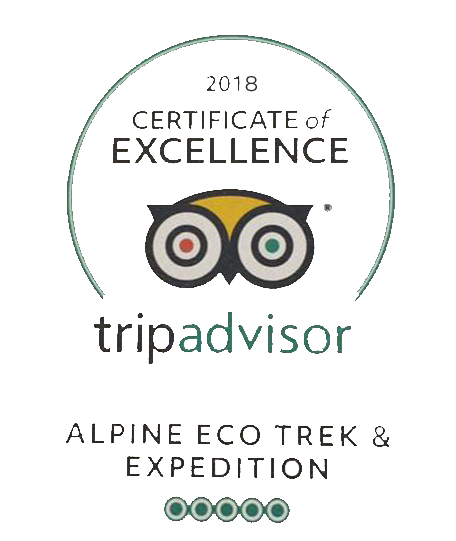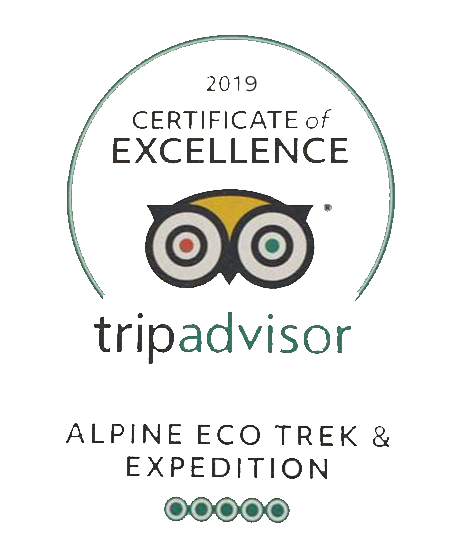Rainbow Valley of Mount Everest
-
October 18, 2023
-
Ram Kumar Adhikari
Rainbow Valley of Mount Everest
Rainbow Valley of Mount Everest: The highest peak in the world, Mount Everest, which is located in Nepal and Tibet, is only braved by the most intrepid hikers, climbers, and adventurers. The natural beauty of Mount Everest is revered by many as providing only dignity, a sense of accomplishment, and peace to those who are fortunate enough to reach the summit. Mount Everest is on the bucket list of every climber. Climbing the highest mountain in the world is a magnificent trip for all mountaineers. The Everest trek is extremely challenging and has many ominous aspects. Every high-altitude climber aspires to summit Mount Everest at least once in their lives, despite the mountain’s seeming danger, but it also has a sinister aspect that is generally overlooked. Including the sad truth that the mountain is also a haven for wandering souls, particularly those who were unfortunate and died while on their quest.

Everest is no joke, with a summit elevation of nearly 26,000 feet, and Rainbow Valley is proof of just how difficult it is to attempt this magnificent mountain expedition. Ever since Mt. Everest was recognized as the highest mountain in the world, the name has likely become ingrained in everyone’s vocabulary. Everyone is aware of its positive aspects. The world’s tallest, most stunning, and most picturesque mountain. However, the rainbow valley is the shadowy side of Mount Everest. It is essential to learn about the “Rainbow Valley Everest” before beginning the ascent. When we hear the name Rainbow Valley, an image of some stunning valleys come in our mind. But the location is not as picturesque as it might seem.
The first climbers to reach the summit of Everest with success were Sir Edmund Hillary and Tenzing Norgay Sherpa in 1953. Not that climbers didn’t try their luck before the year 1953 A.D.; many did, but without success. Some of them succeeded in their ascent and descended successfully, while others quit well before reaching the summit and came back. A few climbers also passed away near the Everest death zone. The Rainbow Valley then served as the cemetery for individuals who had passed away. Since the initial attempt to ascend Mount Everest, this process has been ongoing and will continue until no one attempts to do so.
According to common belief, Mount Everest Rainbow Valley represents the mountain’s dark side and should be kept concealed. It can strike dread into the climbers’ hearts and discourage them from taking on the challenge. The climber will actually offer their best effort during the training and preparation process if they are aware of things like Mount Everest Rainbow Valley, Everest Death Zone, and Everest Graveyard since they will know what to expect once they are on the mountain. It is impossible to avoid because of its cliff-side location, especially if you’re taking the well-traveled path to the peak. The mountaineers would have to deal with the horrifying sights of those corpses on the cliff when they eventually came across them. Therefore, it is best if they are aware of all the difficulties and shortfalls that they may have while trying to scale the summit. These occurrences will alert them to the need for caution as they approach the peak.
A region known as Rainbow Valley is found beneath Mount Everest’s northern crest. This region of the valley is located over eight thousand meters above sea level. The area is covered in the dead bodies of climbers who failed. There are currently several corpse remnants in the Rainbow Valley section. The rainbow-like look of the valley is not due to any paranormal occurrences; rather, it is a product of the equipment that climbers carry and the range of colorful apparel they wear. The vivid clothing and equipment stand out against the frigid, harsh surroundings in a way that resembles a rainbow.
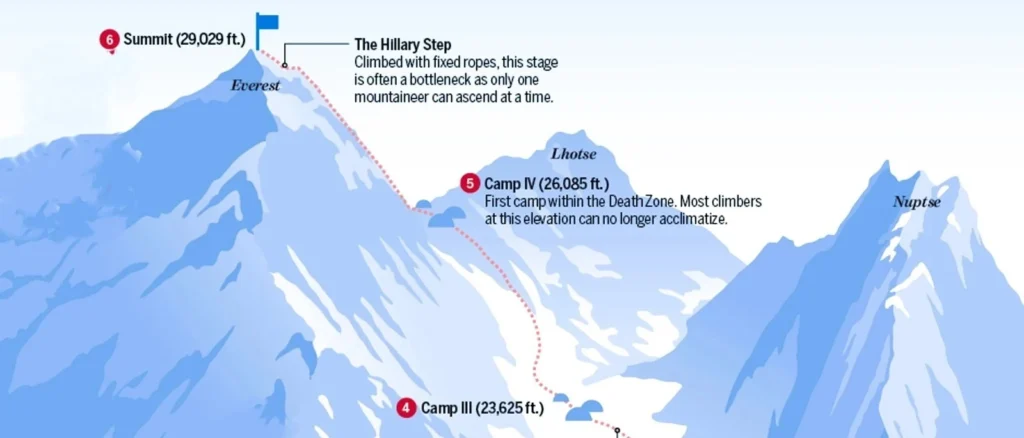
The gear and equipment, which includes blue, red, orange, and green jackets, tents, and oxygen tanks, among other colors and materials, also contributes to the remarkable and varied array of colors that can be seen in the valley. When viewed from a distance, the mixture of these hues and materials can mimic the rainbow’s color range, however under much darker conditions. This region appears so vibrant from a distance, like a rainbow; as a result, it is known as the Rainbow Valley. Many climbers attempt to reach the top each year; some of them succeed, while others give up midway and descend again. And regrettably, some people lose their lives while reaching or leaving the peak. The majority of climbers have perished up to this point in the Everest death zone (region above 8000m).
The death zone is surrounded by low oxygen levels, severe weather, and powerful winds. Additionally, the trail through the death zone is so narrow that only one body may fit on each step. Anybody passing away in the “trail of death zone” is pushed off the path. Climbers on Everest are sadly left no option in this grim tale. Every minute is a matter of life or death due to the trail’s perilously confined, icy, and slippery conditions. When climbers come across dead bodies, they must prioritize themselves and make every effort to live. Climbers must struggle to avoid dozing off and freezing to death in the cold because the effects of altitude sickness are so severe in the Death Zone. As a result, Rainbow Valley ends up serving as a cemetery for those who were forced. Transporting dead bodies is a very dangerous undertaking. Nobody is readily willing to take the danger for those who are already dead. Additionally, it takes several persons to bring a single body. Therefore, the dead pile up more the more deaths there are in this area resulting in a place like Rainbow Valley.
The distance between Rainbow Valley and the mountain’s summit is about one thousand feet to twenty six thousand feet above sea level, the environment is exceedingly hazardous. Climbers must worry about their oxygen canisters failing or running out of air before they can start the descent even if they can ascend without falling. It’s a dangerous path, and with so many climbers swarming the trail, it can take longer than you think. This final section of the summit is, to put it mildly, difficult because the oxygen levels there are only a third of what they are at sea level (where we’re used to being). The circumstances have a disastrous effect on the body, thereby forcing it to shut down and degenerate more quickly.
Any portion of Mount Everest above eight thousand m (26,247ft) is considered to be in the death zone. At this time, more over two hundred people have died here out of all the deaths on Everest so far. Because of this, this area of the mountain is known as the Death Zone, because your body is currently running low on oxygen. As the air is so thin, it cannot support human life for very long. Walking is challenging because you’re also dealing with a bitter cold and exhaustion. The death zone has extremely low oxygen levels. In the death zone, there is just one-third as much oxygen as there normally is. While approaching the mountain, climbers must carry extra oxygen tanks with them. Therefore, in order to prevent altitude sickness and lung stress, the majority of climbers bring along additional oxygen tanks and use them, especially when in the “death zone.” One of the hardest portions of this expedition is the approximately 6-hour steep ascent to the summit of Mt. Everest, known as the bottleneck.

As it is evident from some of the photos, the group of climbers starts off in a line. Mountain climbers must persevere for longer periods of time to reach the peak during peak seasons when the weather is extremely hazardous. The main cause of altitude sickness and even mortality in such heights is any issue with or shortage of oxygen tanks. The path is severely congested because there is nowhere for the next queue to wait. Here, the majority of fatalities take place.
In the death zone, oxygen is extremely rare, and any oxygen supply deficiency results in death. Only one body can be transported at a time on the death zone’s limited trail to the summit. As a result, the corpse in the “trail of death” zone is pushed down into Rainbow Valley. So anybody who passes away in the death zone will get a grave in Rainbow Valley.
On Everest, the harsh weather drifts the dead bodies, and climbers push and walk over them. They don’t lie there very prettily or proudly either. A recent climber described a body on Everest as “a man who was wrapped like a mummy” when describing his feelings about it. More than 200 climbers have lost their lives in the death zone since the Mt. Everest expedition began in 1922. The most frequent causes of mortality in the Rainbow Valley Everest are avalanches in the death zone. More and more bodies keep stacking up, giving more color to the area, as climbers continue to perish in the Rainbow valley Everest due to the terrible weather, avalanches, and weariness.
In order to go to the Rainbow Valley or other regions below the ridge, their dead bodies are either pushed off the pathways or are walked over. A recent ascent of Mount Everest by Chad Gaston included passing several people who were unable to move, including one who was wrapped like a mummy. Since Nineteen twenty two, more than three hundreds of climbers have perished in this danger zone. At least 19 climbers were killed by an avalanche in 2015. With time, the number of bodies grows, and the rainbow valley gives it color.
The Nepalese government has also established certain tight guidelines for choosing who is permitted to ascend Everest, which only shortlists experienced mountaineers. Approximately 5000 climbers have reached the mountain’s peak since the expedition to Mt. Everest got under way in 1924, and 305 have perished in the process up until 2021. One mountaineer described the sensation of being above 8000 meters in the air and what exactly “summit fever” is. The climber loses their capacity for reason due to summit fever. The climbers are faced with difficult decisions over whether or not to continue the journey due to weariness and the weather. Making poor choices might result in a mountain climber fighting to continue when they are exhausted and finding it nearly impossible to turn around.

It’s either impossible or extremely difficult to remove the body from that elevation, therefore it either stays in the death zone for all time, like Rainbow Valley, or it is occasionally recovered. Due to the strong wind, a helicopter rescue is almost impossible. It is challenging to bring the body down due to the severe weather, confined paths, and high altitude. In addition, it takes several heads to recover a single body. Recovery of the body will cost more than $70,00 USD. By paying the sum, several of the bodies have so far been removed from the death zone. however, recovery is difficult and may result in more fatalities.
Two mountaineers from Nepal perished in 1984 while removing a body from the death zone. The deceased are interred in Rainbow Valley for all time. About half are unrecoverable, however some might be. Helicopter rescue is not an option here because the death zone is at the top and there is strong storm wind. The hazardous weather, dry terrain, and meandering trails make it risky to bring down the corpses. There isn’t much room for numerous people to help, yet they are too strong for one person to defeat. Due to all these complications it is so difficult to recover bodies, Rainbow Valley Everest’s mound will continue to expand.
In Mountain Everest’s death zone, most fatalities take place. Simply put, the area above 8000 meters is difficult to be there. The trail is too narrow, the oxygen concentration is low, and the weather is harsh and windy at this altitude. Death can result from even a minor error. Every forward stride is seen as the beginning and end of existence. Climbers run the danger of developing altitude sickness after they reach an altitude of 8,000 feet. Altitude sickness, often known as “acute mountain sickness,” happens when the brain doesn’t get enough oxygen. The barometric pressure of the air drops with elevation. As climbers move up the mountain, this causes oxygen molecules to disperse and thin the air. The body’s organs start to shut down because the brain has so little oxygen available to it. Altitude sickness can cause symptoms such as problems breathing, difficulty moving around, coughing up liquid, confusion, and even unconsciousness. Blood thickens, the body dries up, and the chance of experiencing a stroke rises. Additionally, altitude sickness can seriously damage your judgment. Therefore, every strenuous stride you take is a race against time.
A little over 5,000 climbers have reached the summit of Mount Everest, and 295 of them have perished since 1924, according to the Himalayan Database of 2019. In 1980, the death rate was less than 1%. According to a BBC article, avalanches were to blame for the bulk of fatalities (about 41.6%), while acute mountain illness was to blame for 22.2% of fatalities on Mount Everest. Similar to this, falls and exhaustion are additional reasons why climbers die while ascending Everest. The highest death rate, 2.2%, occurred in the 1970s and 1980s. The death rate was 1% in 2019, therefore it is also declining.
According to the study “Mortality on Mount Everest,” extreme exhaustion and delayed summit timings are the primary causes of subsequent fatalities. One in four climbers of Everest may experience retinal hemorrhages. These usually become better as you descend to lower elevations, but they can still be deadly in the Death Zone. According to an ABC Catalyst report, one in every 20 climbers who successfully reach the peak of Everest perishes on the way back to base camp. In the Everest Death Zone, one can find the majority of frozen mountainside bodies. Climbers have successfully negotiated the danger zone and returned from Everest over the years despite these formidable obstacles.

However, it is important to keep in mind that Rainbow Valley is an extremely dangerous location when visiting there, so the trip should not be taken lightly. Before entering Mount Everest’s death zone, it would be preferable to have the proper gear and safety procedures. A climbing guide who is knowledgeable about the region and who can provide you tips on how to stay safe in Rainbow Valley is a must in order to ensure safety. Additionally, the necessary supplies, like food, water, shelter, and oxygen tanks should not be missed. The higher you travel in this region, the less air is breathable, therefore a steady supply of oxygen must be handy. Additionally, you must be in excellent physical condition; yet, cardiovascular fitness is insufficient. You must prepare your body to withstand the altitude you’ll encounter on the mountain.
This entails doing further climbs higher than 20,000 feet above sea level, getting comfortable with your gear, and acclimating your body to new elevations. It’s also essential that you psychologically get yourself for the challenges ahead. It will need tremendous mental fortitude and courage to press on if you experience the effects of altitude sickness. In order to be focused and determined even when you feel your worst, you must learn what cognitive techniques, tactics, and strategies to apply when practicing for your climb. Make sure to not cut corners on necessities like footwear. For more than a month, you’ll be climbing in the most challenging conditions of your life, so you want to be sure you’re well-equipped with the greatest equipment.

You should only wear the best mountaineering gear and down jackets. As many mountain guides have climbed the peak more than once, be sure to ask them for their recommendations if you’re traveling with one. You’ll need every edge you can get for this ascent, and the best one is professional advice. Mount Everest is a tremendous physical, emotional, and mental challenge due to its arduous terrain, a narrow trail to the peak, severe weather, and the devastation of Rainbow Valley. You must therefore be as ready as you can be for your journey on the highest top in the entire world.
Climbers from all around the world have shared their first-hand accounts of ascending the death zone or Rainbow Valley. As diverse as the colors of the rainbow are the tales of these brave individuals. Some climbers have described it as an ‘otherworldly experience,’ where they were surrounded by an incredible variety of hues and felt a sense of tranquility and amazement. According to some, entering the Rainbow Valley is like stepping into a different reality where time has stopped and life has slowed to a crawl.
Others, though, have encountered existential dilemmas they had never experienced before as they stood in the death zone and questioned the purpose of existence. While not everyone will find it enjoyable, those who have visited this magical location on Mount Everest say it has made a lasting effect. At the end of the day, it’s critical to keep in mind how dangerous Mount Everest is. Its ranking as one of the most stunning locations on the planet is proof of the strength of nature. It’s crucial to respect that authority and keep in mind the dangers present in even the most picturesque settings.
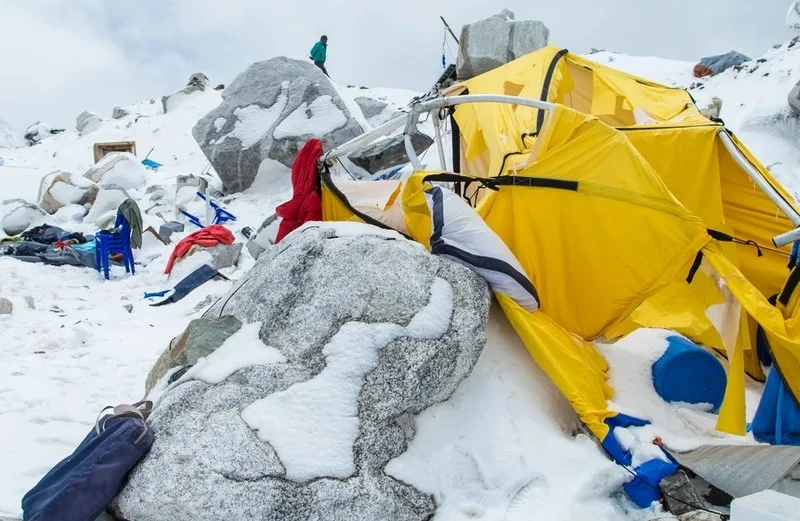
Before starting the ascent to Mount Everest, climbers converge in base camp and make it their home for several weeks during the Everest Expedition. During this period, the base has a busy and joyful atmosphere. The climbers set up bright tents and participated in singing, dancing, sharing, and telling stories, among other things. The Rainbow Valley is the focal point of the most of the ancient Everest legends that the locals have to tell the climbers. The stories frequently center on the dead bodies. The stories of Hannelore Schmatz, Green Boots, and Sleeping Beauty are all captivating.
